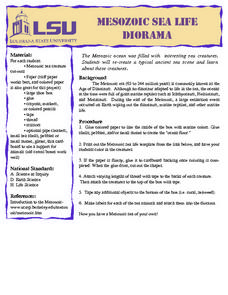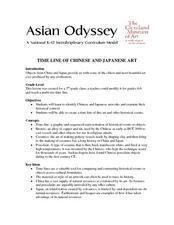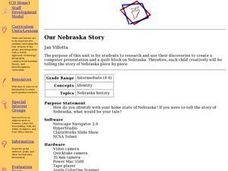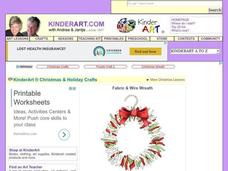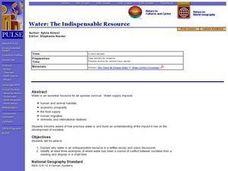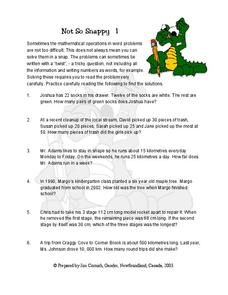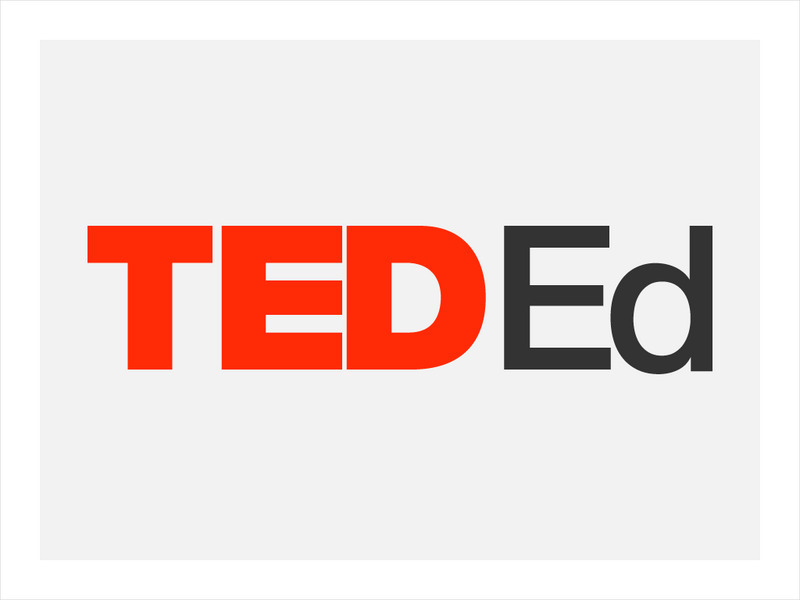Curated OER
Who We Are: To Know the Characteristics of a Population Within Certain Domains
Young scholars, through research, discover the characteristics of the population of Quebec and compare them to those of Canada as a whole. They create a class presentation about information they found.
Curated OER
Recycled Lid Ornament
Learners create a keepsake ornament out of recycled plastic lids and other household items.
Curated OER
Living With Fire
Students identify effects of treatment weather on behavior of a wildland fire. They view simulation game that predicts effects of forest management on fire behavior.
Curated OER
Mesozoic Sea Life Diorama
Students create a diorama depicting Mesozoic sea life. They color a template and add shells and pebbles to the diorama to depict the ocean floor.
Curated OER
Time Line Of Chinese And Japanese Art
Students create individual time lines placing various works of Asian art into chronological order. The information gathered is used to create one class time line for display.
Curated OER
Natural Wonders of China And Japan
Students identify some of the attributes of China and Japan and compare and contrast the way Chinese, Japanese, and American artists represent nature in art. The lesson is for upper-elementary classrooms.
Curated OER
Our Nebraska Story
Students research and use their discoveries to create a computer presentation and a quilt block on Nebraska. They will tell the story of Nebraska in an oral presentation using each piece of the quilt.
Curated OER
Christmas Wreath
Students create Christmas wreaths using Christmas material or fabric and coat hangers in this holiday lesson for the elementary classroom. Modifications would need to be made to accommodate older or more advanced students. Emphasis is...
Curated OER
Demography and Services of Fairfax County, Virginia
Twelfth graders are introduced to the demographics and services of Fairfax County, Virginia. In groups, they identify programs and services that should be supported by tax dollars and presnt them to the class in a PowerPoint presentation.
Curated OER
World Geography: Water: The Indispensable Resource
Young scholars are able to explain why water is an indispensable resource in a written essay and class discussion. They identify at least three examples of where water has been a source of conflict between societies from a reading and...
Curated OER
From Lake to Lake
Fourth graders investigate the formation of the Great Salt Lake. They conduct research using a variety of resources. The information is used to construct a timeline of the history. Each phase of history should include facts and...
Curated OER
Children of the Earth and Sky
Fourth graders explore the culture and traditions of Native Americans. After reading "Children of the Earth and Sky," students discuss the lives of Native American children in relation to their own. They create replicas of Hopi...
Curated OER
Memory and Legacy: Building Monuments and Memorials
Learners analyze the reasons why groups build monuments and memorials. Using the Holocaust as an example, they reflect on issues that are addressed in monuments related to it. They create a monument of their own and write an essay about...
Curated OER
Wh0-o-o-o's Out There?
Fifth graders describe the physical features of an owl and identify survival adaptations. They Investigate an owl's niche in an ecosystem. The students participate in an interactive puzzle on the internet that helps for motivation.
Curated OER
Earth and Seasons
Sixth graders comprehend that the path Earth takes as it revolves around the sun is called its orbit. They also comprehend that the axis is an imaginary line that passes through Earth's center and its North and South Poles. Students...
Curated OER
Plants
In this science activity, students investigate plants by first reading a paragraph of information. Students then choose a plant, illustrate and write about it.
Curated OER
Not So Snappy 1
In this math worksheet, students solve 6 word problems. These problems are not difficult but some have a tricky question, extra information and some numbers written as words.
Curated OER
Layers Upon Layers - Lesson Plan
Young scholars study rock layers and the sequence of events that occur when a canyon forms. In this sedimentary lesson plan students complete a lab while in groups and discuss what happens.
TED Talks
Ted: Ted Ed: How North America Got Its Shape
Peter J. Haproff explains how it took millions of years and some incredible plate tectonics to forge the continent we know today. [4:57]





